Building blocks of a strong system: Exploring computer hardware components
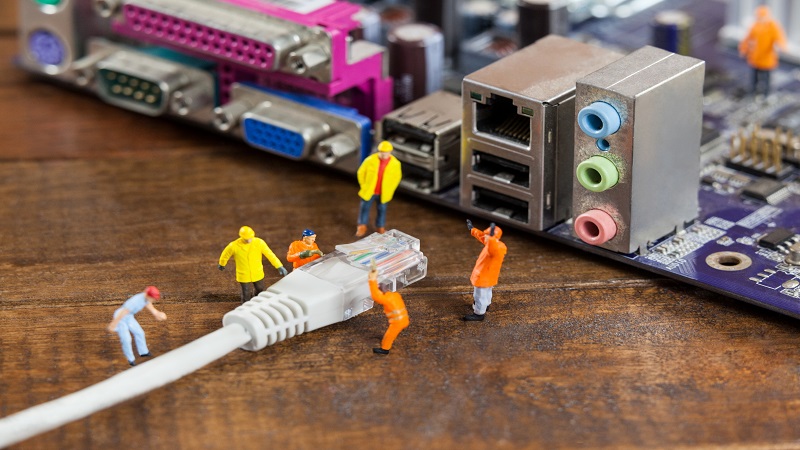
In this article, we will continue to explore the enigmatic world of intelligent machines and discover the technological tricks that make them function. You will uncover how these crucial elements interact to build and operate the computer we use daily.
Every computer has a hidden architecture, complicated by parts, each of which is essential for the overall operation of the system. Together, we will examine these crucial elements to see how they work in harmony to provide the resilience and functionality we need.
Prepare for a captivating journey into the world of computer hardware components. Together, let’s learn about the inner workings of technological marvels that support our digital life and uncover the mysteries of the technology that surrounds us.
So, a computer is comprised of a sophisticated hardware assembly that interacts with each other to enable it to function. Each element plays a specific role in data processing and storage. Next, I will take a look at the main hardware components of a computer, and more ;)
Central Processing Unit (CPU)

The heart and brain of a computer are the central processing unit (CPU), also known as the processor. This crucial component ensures that other hardware and software elements work in harmony by coordinating and managing their actions.
The main tasks of the processor are to perform calculations and execute commands. It is responsible for data processing, extracting information from the system memory, and performing the necessary operations to achieve desired results. Calculations and operations are performed faster and more efficiently as the processor becomes more powerful and faster.
Modern computers have multiple cores in their processors, allowing them to process multiple instructions simultaneously, which is an intriguing feature. The computer’s performance and processing capability are greatly enhanced by this capacity, known as parallel processing. When multiple tasks or complex applications run concurrently, multi-core processors perform exceptionally well.
The processor’s clock speed, expressed in GHz (gigahertz), is another crucial aspect. This measurement indicates how quickly the processor can execute instructions. More calculations can be completed by the processor in a certain period of time as the frequency increases. One of the important factors affecting a computer’s overall performance is the processor’s frequency.
A computer’s performance is influenced by a variety of hardware elements, optimized software, and other factors in addition to the processor. To achieve high performance and a seamless user experience, a well-balanced combination of processor, memory, storage unit, and other components is necessary.
Random Access Memory (RAM)
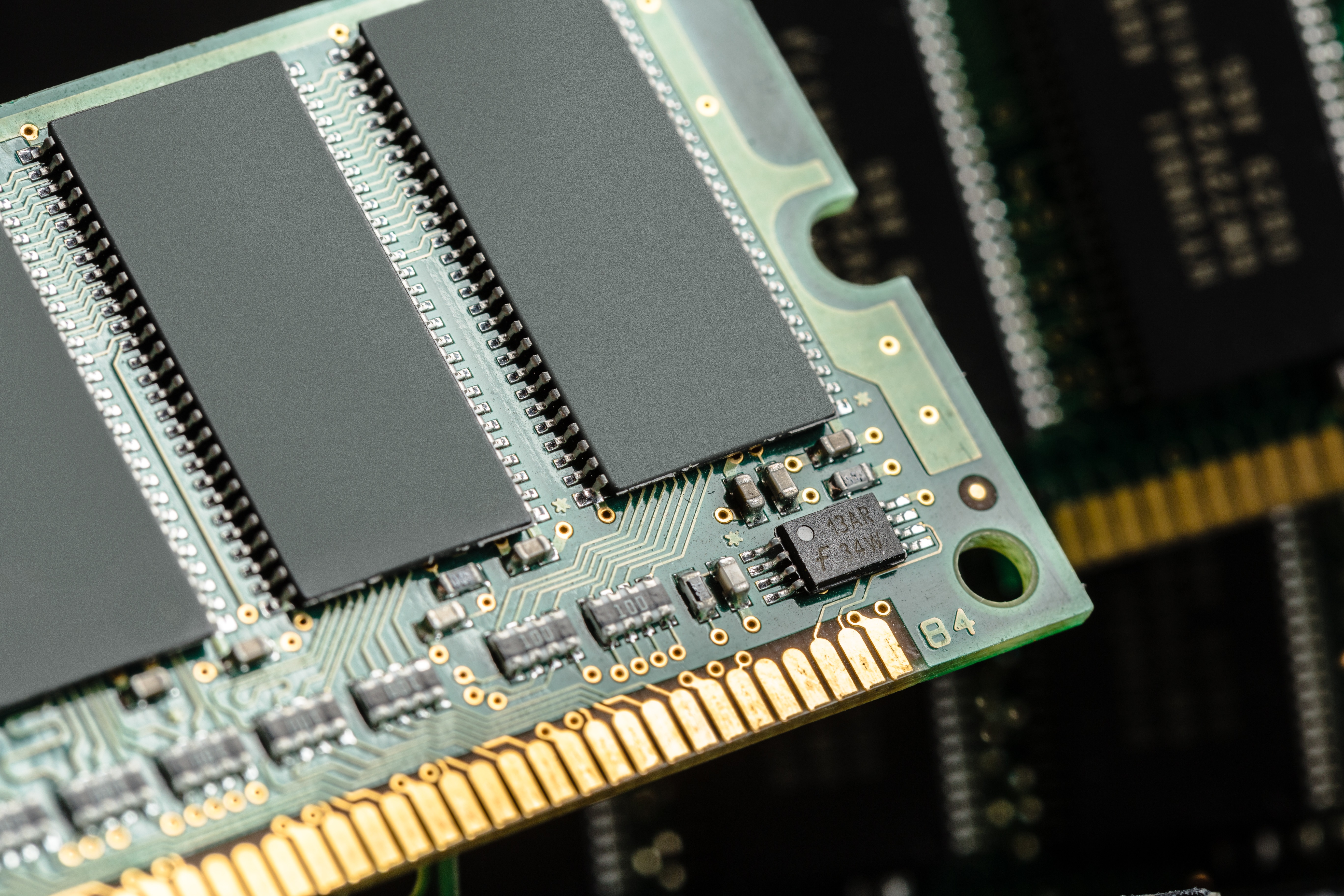
Random Access Memory (RAM), also known as volatile memory, is a vital element in a computer’s operation. This memory plays a crucial role in storing and managing data and instructions temporarily needed for system operation.
RAM can be thought of as a temporary workspace for the computer. It holds the data and instructions that the processor uses during task execution. Since RAM is quickly and directly accessed by the processor, it can efficiently access and process data.
It’s important to note that RAM is volatile memory, meaning that when the computer is turned off or restarted, the data stored in RAM is lost. Therefore, important information needs to be saved to permanent storage, such as the hard disk or SSD, to prevent data loss.
An interesting aspect is that a computer functions better with more RAM. The more available RAM there is, the more data the system can handle and process simultaneously. This translates to better performance and the ability to run more complex applications and tasks without affecting speed and smoothness of operation.
For instance, when you have multiple applications and processes open simultaneously, more RAM will allow the system to manage them more efficiently without slowing down overall performance. Additionally, in the case of intensive games or graphic applications, ample RAM can ensure smoother playback and a more enjoyable experience.
Storage Device
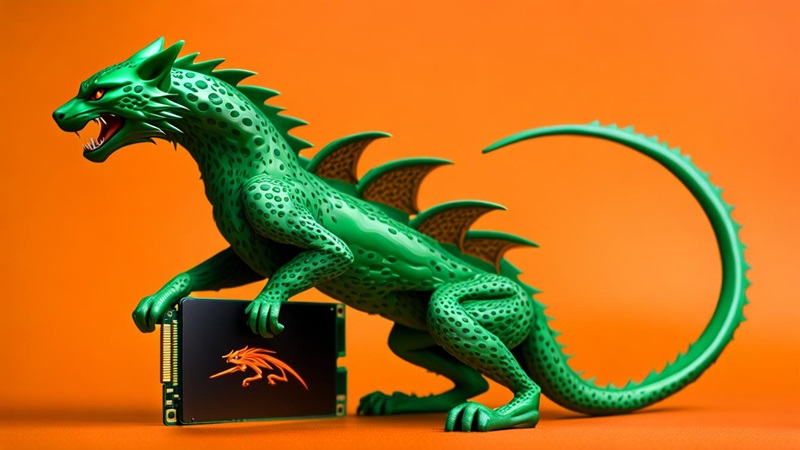
The storage device is an essential component of a computer, responsible for maintaining data over a long period of time. There are two main types of storage units used in contemporary computers: Solid State Drives (SSD) and Hard Disk Drives (HDD).
SSDs rely on flash memory technology to store data. They are considered faster and more durable compared to HDDs. SSDs use flash memory cells to store information and have no moving components.
As a result, the data access time is much shorter, resulting in higher read and write speeds. Additionally, since there are no mechanical components moving, SSDs are more resistant to shocks and vibrations, making them more reliable in the long term.
On the other hand, HDDs use rotating magnetic disks to store data. They have a structure similar to a disc, on which information is recorded in the form of magnetism. HDDs have higher storage capacity compared to SSDs at a lower cost per gigabit.
However, due to mechanical components and the need for disk rotation, data access time is longer compared to SSDs. Additionally, HDDs are more prone to failures caused by shocks or vibrations due to their moving components.
The choice between SSD and HDD depends on the user’s needs and priorities. If speed and durability are important aspects, an SSD can be an excellent choice.
SSDs are ideal for operating systems and applications that require high data access speed, such as fast system boot-up or running intensive applications. Conversely, if a large storage capacity at a more affordable price is desired, HDDs can be a suitable solution.
It’s worth mentioning that many modern computers use a combination of both types of storage units. SSDs can be used for the operating system and critical applications, while HDDs are used for massive data storage, such as media files or personal documents.
Motherboard

The motherboard, also known as the mainboard, represents the central core of a computer, providing vital connections between all hardware components. This component serves as a central hub that allows the exchange of information between the processor, memory, storage device, graphics card, and other key parts of the system.
One of the fundamental functions of the motherboard is to ensure efficient connection between the processor and other components. This includes a special socket in which the processor is placed and electrically connected. Through this socket, the processor can communicate with the rest of the system, sending and receiving instructions and data.
Moreover, the motherboard provides memory slots where RAM modules are mounted. These slots allow quick and efficient access to system memory, ensuring that necessary data is stored and accessed optimally.
The motherboard also includes connectors and ports necessary to connect other hardware components and peripherals. For example, there are SATA ports that allow the connection of storage units such as hard disks and SSDs to store and access data in the long term.
The motherboard also includes PCI Express slots, which allow the addition of expansion cards such as sound cards, network cards, or additional graphics cards.
In addition to hardware connections, the motherboard offers ports for external peripherals, such as the mouse, keyboard, printer, or external storage devices. These ports allow connection and interaction with various devices, expanding the system’s functionality and enabling the user to control and interact with the computer in an intuitive and practical manner.
Graphics Card
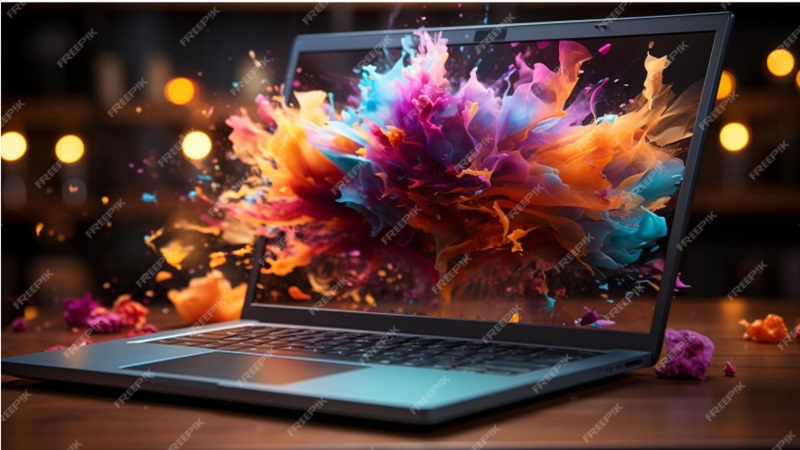
Also known as the graphics card or GPU (Graphics Processing Unit), it plays a crucial role in displaying information on the monitor. This hardware component retrieves graphics information from the system memory and transforms it into video signals that the monitor can display.
When using the computer to watch videos, run graphic applications, or play games, the graphics card takes graphic data from system memory and processes it quickly and efficiently. This includes image generation, application of visual effects, and detailed rendering of graphic elements.
There are two main types of graphics cards: integrated and dedicated. Integrated graphics cards are built into the computer’s motherboard and share resources with other components. These are sufficient for everyday computer use, such as web browsing, watching movies, or using office applications.
On the other hand, dedicated graphics cards are separate and have their own resources, including their own video memory. They are designed to provide superior graphics performance and are especially recommended for graphics-intensive tasks such as gaming or professional graphic design.
Dedicated graphics cards offer a higher level of graphic detail, smooth playback, and the ability to handle complex textures, thus providing an enhanced and more immersive visual experience.
Furthermore, dedicated graphics cards can be equipped with advanced technologies such as support for high resolutions, 3D monitoring technology, vertical synchronization technology, or ray tracing technologies, which offer superior visual quality and a more immersive gaming experience.
It’s important to note that the performance of the graphics card is influenced by other components, such as the processor and memory. A proper balance between these components can ensure optimal performance in graphic tasks.
Other Components
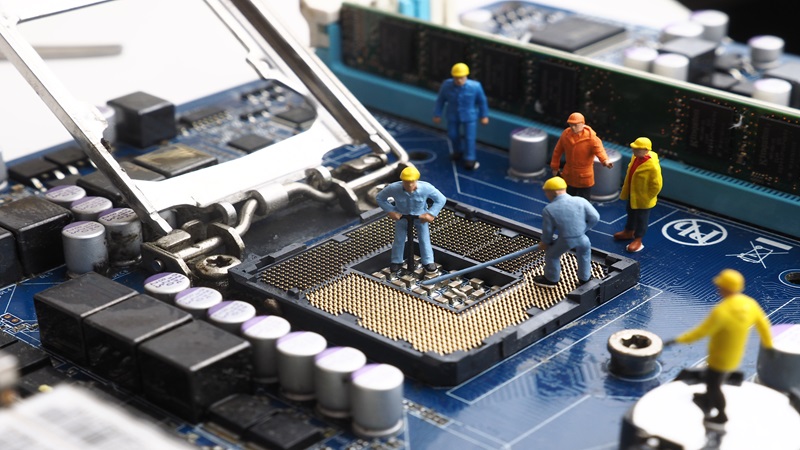
The computer’s sound card is responsible for handling and reproducing sound. Speakers, headphones, and other ports and connectors for audio devices are included in it. When listening to music, playing games, or watching videos, the sound card ensures audio quality.
- Network Interface Card: This device allows a computer to connect to a local or global network, including the internet. It could be a separate part or integrated into the motherboard. Users can share files, connect to the internet, and communicate with other devices on the network through the network interface card.
- Webcam: A webcam is a device that enables the capture and transmission of real-time video images. This is useful for live streaming, video recording, and video conferencing.

- CD/DVD Optical Drive: CDs and DVDs are optical discs, and the optical drive is used to read and write data on them. It can be used to install software, play multimedia files, or create backups.
- Fans are essential parts of the computer’s cooling system. To keep hardware like the processor, graphics card, and storage unit cool, they ensure air circulation. Fans help maintain the ideal temperature inside the computer and prevent overheating, which can affect both durability and performance.
- Memory Upgrade: To increase computer performance and storage capacity, additional memory, such as extra RAM modules, can be installed. Your computer will run faster and smoother with more RAM, as it can handle more processes and tasks simultaneously.
- Solid State Drive (SSD): Compared to a traditional hard disk, an SSD offers significantly faster data access and transfer rates. The operating system and applications can load faster and respond to read and write operations more quickly when using an SSD.
- Video Capture Card: You can record and capture video content from other sources such as video game consoles, video cameras, or VHS tapes using a video capture card. This is useful when recording and editing personal video content.
- Peripheral Control Device: The keyboard and mouse are essential peripheral control devices for user interaction with computers. They allow navigation and input of data and commands into the operating system and applications.
- Speakers or headphones are devices used to play sound from a computer. They provide a high-quality audio experience when playing games, watching movies, or listening to music.

- Memory Card Reader: A memory card reader is a device that reads and transfers data from memory cards used in devices such as cameras, smartphones, and other electronic devices. Data from memory cards to the computer can be transferred quickly and easily with it.
- Printer: A printer is a device for obtaining printed versions of files or images from a computer. There are different types of printers, such as inkjet and laser models, each with unique features and capabilities.
- Scanner: A scanner makes it possible to digitize physical documents and images, creating digital files. This is useful for document storage, document sharing, and electronic archiving of physical information.
These are just a few examples of additional parts that a computer could have. A computer can be customized and made more flexible so that it can be tailored to the user’s needs and unique requirements.
Key Features of Hardware Components
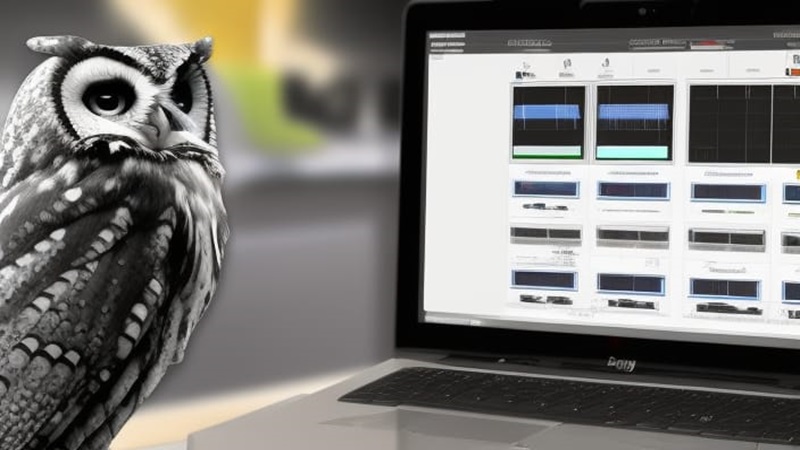
The table below includes relevant key features for each hardware component. This additional information can provide you with a more comprehensive picture of specifications and functionalities to consider when choosing components for your computer.
| Component | Example Models | Key Features |
|---|---|---|
| Processor | Intel Core i9, AMD Ryzen 7 | Number of cores, clock speed |
| RAM | Corsair Vengeance, Kingston HyperX | Capacity, clock speed |
| Motherboard | Asus ROG Strix, Gigabyte Aorus | Form factor, integrated chipset |
| Graphics Card | NVIDIA GeForce RTX, AMD Radeon | Video memory, API support |
| Storage Unit | Samsung SSD, Seagate Barracuda | Capacity, transfer speed |
| Power Supply | Corsair RM Series, EVGA SuperNOVA | Rated power, energy efficiency |
| Network Card | TP-Link Archer, Intel Gigabit | Connection type, transfer speed |
The hardware of a computer is composed of various parts that work together to ensure its functionality. The operating system connects and manages the interconnections between the motherboard, graphics card, RAM, storage unit, processor, and other components, allowing the computer to perform necessary functions.
To effectively choose, upgrade, and troubleshoot a computer, you need a solid understanding of these components.